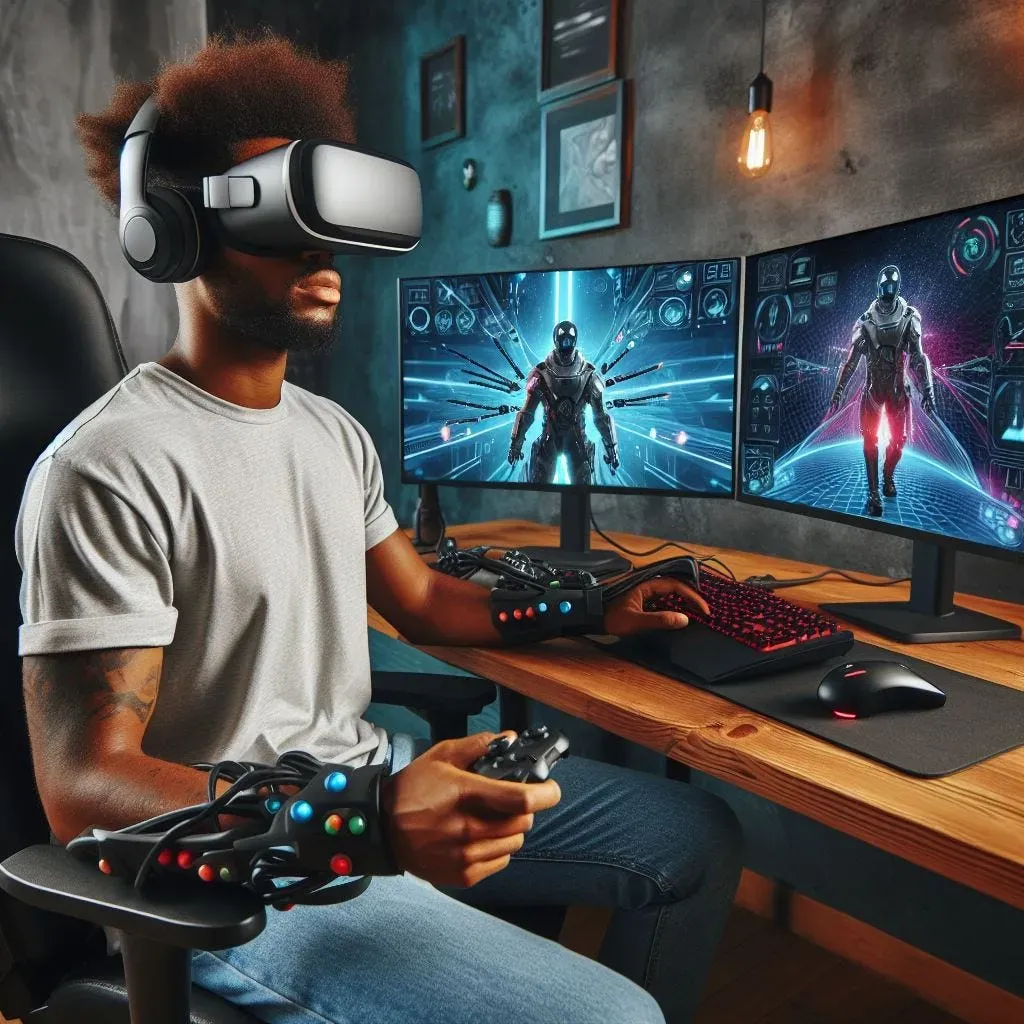VR gaming essentials are a quick-start guide to unlocking immersive experiences in virtual reality, providing a clear path from setup to memorable play. From reliable VR headset recommendations to maximizing comfort and safety, this intro emphasizes immersive VR experiences that feel natural. Alongside practical gear, we explore how VR motion controllers contribute to intuitive interactions and how room layout supports smooth locomotion. We also preview a spectrum of VR game genres to help you curate a balanced library that keeps sessions fresh. By focusing on VR comfort tips and ergonomic setup, these VR gaming essentials help you stretch playtime while protecting your budget.
Viewed through a broader lens, this article surveys the core elements of virtual reality play, from contrasts in headsets and sensors to the impact of spatial audio on immersion. By using terms like hardware setup, input ergonomics, and comfort practices, the piece follows an LSI approach that connects related ideas without repeating labels. Readers will encounter synonyms and related concepts such as headset performance, motion tracking, room-scale space, and diverse VR game genres. Together, these terms sketch a practical framework that helps you tailor gear, layout, and experiences to your room, budget, and personal preferences.
VR gaming essentials: A practical gateway to immersive VR experiences and VR headset recommendations
VR gaming essentials transform curiosity into capability by balancing the core pillars of immersion and comfort. Prioritizing immersive VR experiences means focusing on clear visuals, precise tracking, spatial audio, and natural movement to help you feel present in virtual spaces. The headset you choose acts as the window to these experiences, which is why VR headset recommendations matter: seek high-resolution displays, robust tracking, comfortable ergonomics, and easy setup so longer sessions remain enjoyable and productive.
Choosing the right hardware shapes your entire VR journey. VR motion controllers provide ergonomic grips, responsive triggers, and accurate tracking that let you manipulate tools, solve puzzles, and interact with virtual objects with minimal learning curve. When evaluating VR headset recommendations, consider display type and resolution, field of view, weighting, comfort, and how easily you can manage cables or opt for wireless options. Your choice directly influences how often you reach for VR, how long you can stay engaged, and how authentically you experience immersive VR experiences.
VR game genres, motion controllers, and comfort tips for sustainable play
Exploring VR game genres broadens what you can experience and helps you determine which immersive mechanics resonate with your play style. From action-adventure and puzzle challenges to simulation experiences and horror atmospheres, a well-rounded library across VR game genres keeps sessions fresh and engaging. Curate a mix of visually impressive titles, story-driven experiences, and shorter, pick-up-and-play options to maintain momentum and reduce fatigue while still delivering memorable moments.
Pairing the right VR motion controllers with practical comfort tips creates a sustainable VR routine. Comfortable input devices, combined with thoughtful room setup, gradual exposure, and regular breaks, dramatically improves long-term playability. Implement ergonomics like appropriate IPD settings, organized cabling, and controlled lighting to protect vision and tracking. By aligning VR motion controllers and comfort tips with your preferred VR game genres, you build a durable, enjoyable habit that can persist across many sessions.
Frequently Asked Questions
What are the VR gaming essentials for immersive VR experiences, and how do I choose the right VR headset recommendations and motion controllers?
VR gaming essentials start with a solid headset and dependable motion controllers. For immersive VR experiences, rely on VR headset recommendations that match your setup—standalone headsets for simplicity or PC-tethered systems for higher fidelity—focusing on resolution, tracking, and comfort. Choose ergonomic VR motion controllers with precise input and reliable tracking to enhance natural interaction. Finally, optimize your playspace and content selection to maintain immersion across sessions.
How can I apply VR comfort tips across VR game genres to extend playtime and enjoyment?
Start with VR comfort tips such as gradual exposure, correct IPD, and regular breaks to reduce fatigue during longer sessions. Pair these with smart space planning, cable management, and balanced lighting to minimize physical strain and distraction. Exploring VR game genres—from puzzle adventures to action experiences—helps you find experiences that match your comfort level while keeping sessions enjoyable. This approach keeps VR gaming essentials sustainable over time.
| Aspect | Key Points |
|---|---|
| 1) Immersive VR experiences | High‑fidelity visuals, accurate tracking, spatial audio, and tactile feedback drive immersion. A clear playspace and clean headset lenses support longer, more convincing sessions. |
| 2) VR headset recommendations | Headset type matters: standalone (ease of use) vs. PC‑tethered (potentially higher performance). Consider display resolution, field of view, tracking reliability, comfort, and cable/wireless management. |
| 3) VR motion controllers and input | Ergonomic grip, responsive triggers, reliable tracking, and possible haptics or finger tracking create natural interactions. A comfortable, intuitive setup reduces learning time and enhances presence. |
| 4) VR game genres and content selection | Diversity in genres (action, puzzle, simulation, horror, etc.) helps you discover which mechanics resonate. Aim for a mix of visually impressive titles, narrative experiences, and shorter sessions for sustainability. |
| 5) Comfort tips and safety | Mitigate motion sickness and eye strain with gradual exposure, IPD adjustments, regular breaks, proper lighting, and cable management. Start with short sessions and build endurance safely. |
| 6) Space planning | A safe playspace with clear floors, boundary systems, and sensor placement ensures reliable tracking and reduces accident risk. |
| 7) Cable management | For PC‑tethered setups, ceiling or retractable cables prevent tangling and preserve immersion without compromising safety. |
| 8) Lighting and optics | Clean lenses, correct IPD, and diffuse, glare‑free lighting support sharp visuals and stable tracking. |
| 9) Software housekeeping | Regular firmware/app updates and a curated library focused on quality and comfort help sustain a positive VR experience. |

